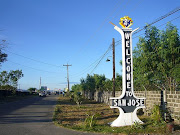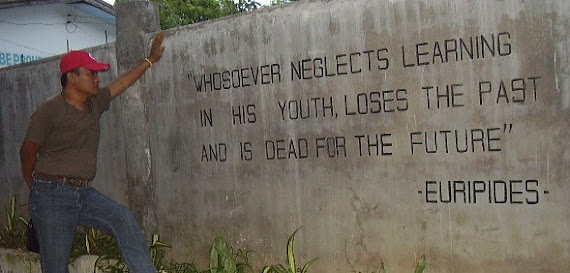
Russian cosmonaut Yuri Gagarin saw the Earth from space for the first time in history and made this famous remark: “Our Earth is blue”. This short message was packed with emotions. Scientists pointed out that the color is created by the combination of air and water and forests play vital role in producing such beautiful color. But enough of aesthetics.
According to the Encyclopedia of Earth, the only remaining intact forests in Mindoro are found along the top of the mountain ridge that divides the island. On the eastern side of the ridge commercial logging ended long enough ago that the remaining intact forests are buffered by secondary forests that have reestablished a closed condition, yet these same forests are again under threat from legal and illegal logging activities. Only 8.5 percent of Mindoro was forested in 1988.Several reforestation reserves and projects had been established in Mindoro since 1936 but these have proved to be less than effective.
The book “Mangyan Survival Strategies” (p. 151) by Jurg Hebling and Volker Schult published in 2004 states, “The then incumbent government also gave unrestricted priority to economic rather than ecological considerations. Briefly before his resignation as Minister of Natural Resources, Ernesto Maceda approved a logging permit, Timber License Agreement, TLA No. 376, on 38,630 hectares of land around Mt. Halcon, to Oriental Wood Processing Corporation… Some 30,000 Mangyans would have been affected by the operations of Oriental Wood.”
The significant loss of 894,170(92.43%) hectares of Mindoro's forest cover has drastically happened over the past 50 years. From more than 50% of forest covered lands in 1924, it dropped to 36% in 1951. And as recorded in 1984, only 73,230 hectares (7.57%) of Mindoro Island's 967,400 hectares of originally forested areas still remain in a threatened state ( ERD, 1995).
At present,the remaining forest cover of only 21,578 ha. (2.2%) are old growth with mossy forests and the remaining 48,945 ha. (5.06%) are residual forests. Most of the old forests have been logged over and remaining forest patches surrounded by wide ranges of grasslands are remnants of selective logging. Remaining forest patches are situated mainly in the central higher regions of the island.
Last March 31, 2009 at the junction of Brgy. Bagong Sikat and Brgy. Bubog in San Jose, Occidental Mindoro, nine (9) persons were apprehended by the San Jose Police Station led by SPO3 Aureo Garcia. The suspects are headed by a known businessman from Brgy. Caminawit of said municipality named Eddie Hopio. They were apprehended because of possessing Illegally-cut lumbers of Molave and Dau species approximately totaling to 500 board feet. The filing of the case is still in progress.
The Mindoro Nickel Project is the biggest threat to our forests. Republic Act No. 7940 or the Philippine Mining Act of 1995 under Chapter XII, Section 72 (Timber Rights) states, “Any provision of law to the contrary notwithstanding, a contractor may be granted a right to cut trees or timber within his mining area as may be necessary for his mining operations subject to forestry laws, rules and regulations.” The Mining Act of 1995 has given foreign and local mining firms more economic and political rights and privileges in the form of mining permits. These permits can give mining firms operation not only timber but water and easement rights for as long as 50 years in an area that can reach as large as 81,000 hectares. To date, more than half a million hectares of Philippine land have been turned over to the control of mining companies.
From Mindoro to the whole Philippines, let us go global. The Secretariat’s Report of the United Nations Environment Programme (UNEP) called “Research and Future Plans” describes this phenomenon by the following conclusion:
“Large scale floods cannot be avoided if denudation of the productive land takes place as such a speed. The results can already be seen in the comparatively poor developing countries of the world. The developed economies will not be able to escape, either. Today, almost 21 million hectares of land are denuded. Unless urgent counter measures are taken by all countries…”
April is Earth Month. The Earth Day on April 22 in 1990 gave a huge boost to environmental efforts worldwide and helped pave the way for the 1992 United Nations Earth Summit in Rio de Janeiro, Brazil.
“The Mangyans who use ‘slash-and-burn’ farming including the upland dwellers who obey and follow orders from illegal cutters that result to massive forest denudation are also guilty of this crime…” This notion is partly correct. And according to Pope John Paul II from his Message for World Peace Day in 1990 : “In the face of such situations (ecological imbalances) it would be very wrong to assign responsibility to the poor alone from the negative environmental consequences of their actions. Rather, the poor, to whom the earth is entrusted no less than to others, must enable to find way out of their poverty.”
For some sectors of our society, the only thing which will deter the probability of ecological holocaust is social justice, completely and swiftly. All else, according to them, is bandwagoning, deception or illusion!
Let us appreciate Mindoro forests not only from its aesthetic values but from ecological and moral cores. In unison we must declare: ”No to Mindoro Nickel Project! No to forest denudation!”
------
(Photo credit: from www.kriyayoga.com - Thank you.)






“The Mangyans who use ‘slash-and-burn’ farming including the upland dwellers who obey and follow orders from illegal cutters that result to massive forest denudation are also guilty of this crime…” This notion is partly correct.
ReplyDeleteMukhang malaking usapin din ito. Ang pagkakaingin ay isang uri ng sistemang pang-agrikultura. Some considered it as agriculture at its earliest... Ang mga Mangyan, bilang mga katutubo na bago pa lamang umuusbong o nakakausad bilang isang grupo o tribu ay maihahanay din sa mga grupong etniko na bago pa lamang natutunan ang pagsasaka. Sa madaling salita, mula primitibo-komunal na tanging economic activity ay pagakaingin, pangangaso at pakikipagkalakal (barter). Maliban na lamang siguro sa grupong Buhid...
Sa parehas na pagbabalangkas ng nasabing usapin, mukhang mahirap yata ipatagos ang paralelismo ng konsepto ng environmental conservation sa mga ordinaryong taong namulat sa "mainstream economy" at sa mga katutubong mga taal na taga-Mindoro lalo't higit napakarami na ng mga external forces sa mga ito.
Isa pa, English ka ngayon ah... he he
pag ganito na po ang inyong entry, lumalabas na ang aking limitasyon... di na ako makasabay kasi english na ang iyong medium na ginagamit (MS).
ReplyDeleteDear Dyoma and MS:
ReplyDeletePraktis lang. May mga nag-suggest kasi sa akin ang ilang foreign/cyber friends na magsulat naman ako ng mga post na maiintindihan nila.
Salamat muli....